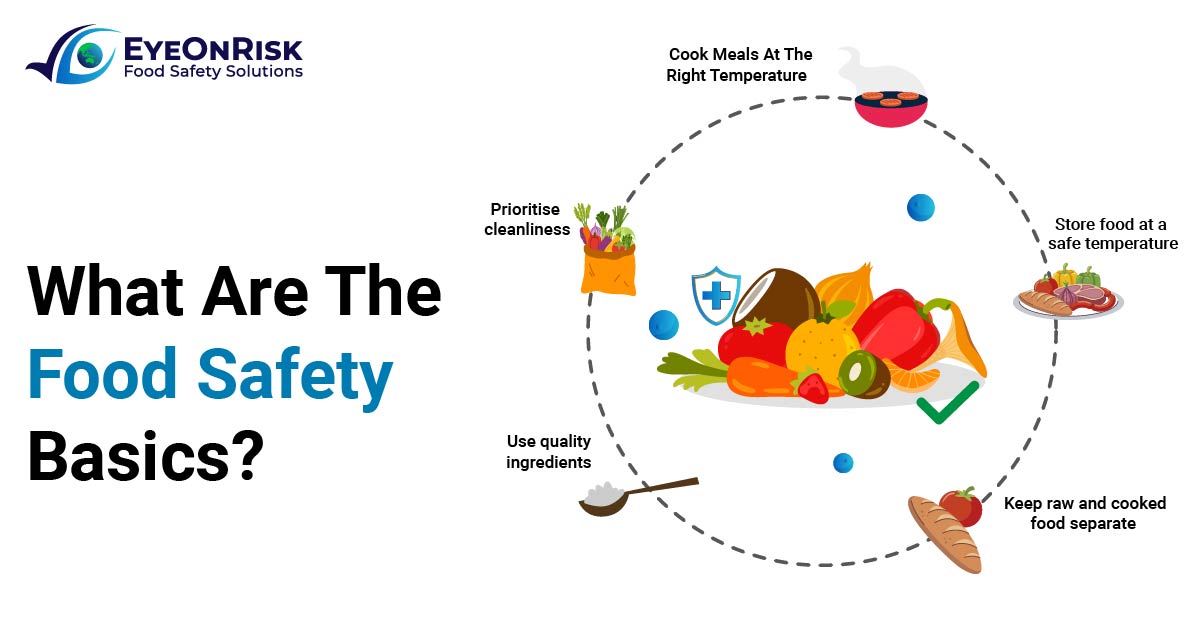What Are The Food Safety Basics?
26 Apr 2024

According to a recent World Health Organisation publication, nearly 600 million people fall sick every year, while 420,000 people die due to food contamination. Are you afraid of seeing such huge numbers? Do not need to panic! In this article, we are going to be aware of all the food safety basics so that you can avoid such chances of food contamination or foodborne illness.
Know the Basics First!
Given the fact maintaining food safety is a daunting task because it demands close attention and sound knowledge. Not only you but all stakeholders involved in the food production process are accountable for ensuring food safety. Therefore, let’s dive deeper to explore the foundational insights behind food safety.
Prioritise cleanliness
We are all aware that the saying "From farm to plate" is no longer valid in modern circumstances. Therefore, WHO has emphasised that we must always practise healthy cooking techniques.
Additionally, we cannot completely eliminate the possibility of cross-contamination caused by pathogenic bacteria because the germs that cause food poisoning can survive in kitchen environments. Hence, personal hygiene and cleanliness during food preparation equally need our attention. Chop vegetarian and non-vegetarian food products on different cutting boards, and before cooking, be careful to clean and sanitise all equipment.
Cook Meals At The Right Temperature.
Pathogenic microorganisms are destroyed by proper cooking. If you are unaware, any whole cuts of beef or meat must be cooked to an internal temperature of 63°C/ 145°F before consumption. Other food products, however, such as chicken and raw ground beef, need to be cooked to a higher temperature of 74°C/165°F. Nutritionists claim that the bacteria multiply rapidly as the temperature drops below 70°C/158°F.
Store food at a safe temperature
Do you know temperature influences the preservation of food, much like cooking? The storage temperatures have an impact on all biological dangers, including dangerous moulds and other microorganisms. Surprisingly, within twenty minutes under ideal conditions, bacteria can double in number, which could result in over 16 million bacterial cells after 8 hours.
The danger zone where bacteria are likely to grow is between 5 and 60°C/40 and 140°F. The tip is to keep food below 5°C or above 60°C.
Keep raw and cooked food separate
Another essential yet valuable practice is separating raw from cooked food significantly to reduce the chance of cross-contamination. It's possible for bacteria to spread from raw food to hands, then directly to other kitchen items, before finally contaminating cooked food.
Use quality ingredients
Lastly, while being in charge of food safety, it is your responsibility to check the quality of the food supply when receiving raw materials from the supplier. Additionally, the condition of supplies must also be taken into account. For example, foods that perish quickly must be transported under refrigerated conditions. It is very difficult to produce high-quality safe food if the ingredients are poor quality.
The Final Say
If you follow these simple, straightforward procedures, it will ensure a long and healthy lifestyle habit.